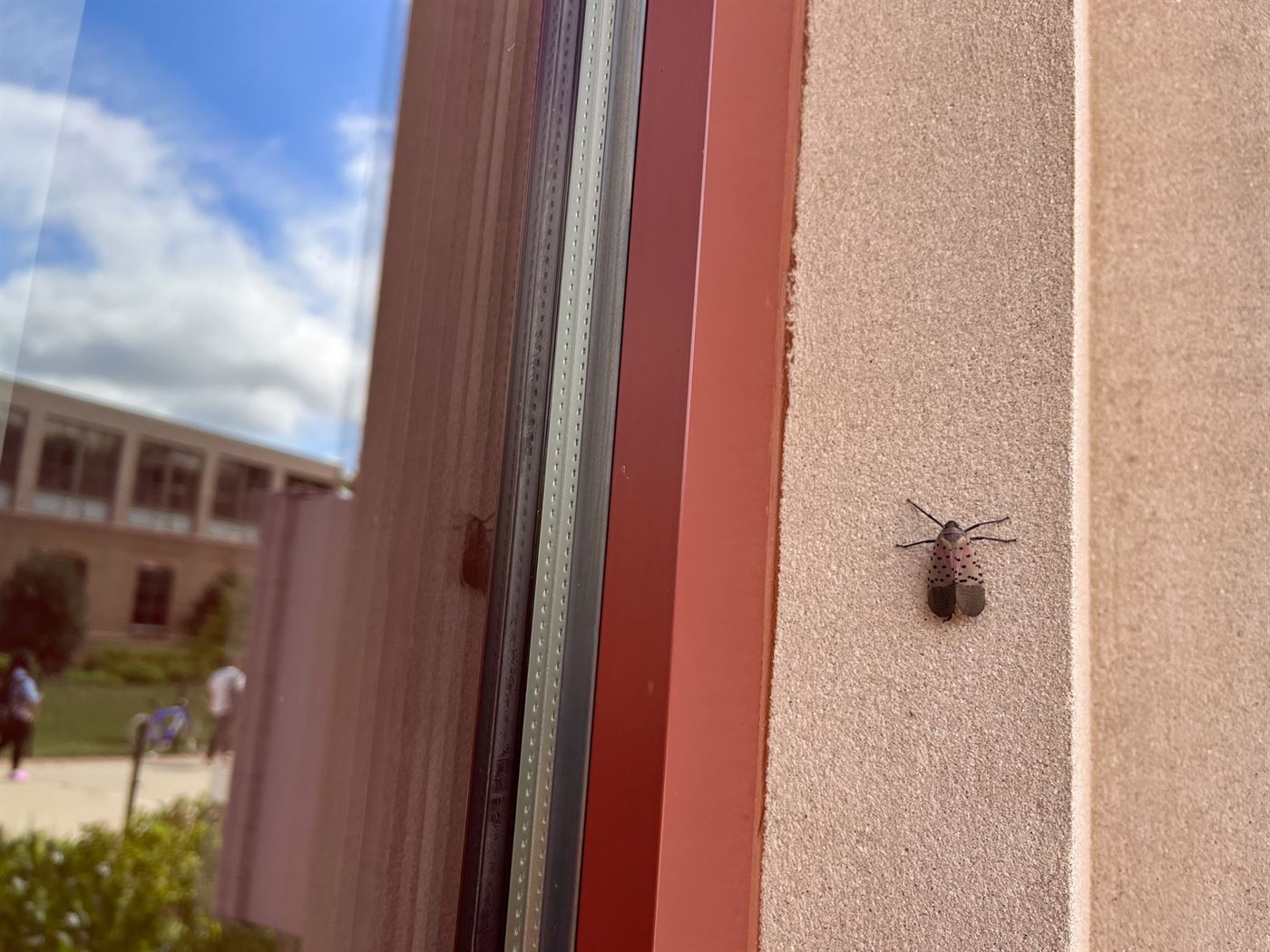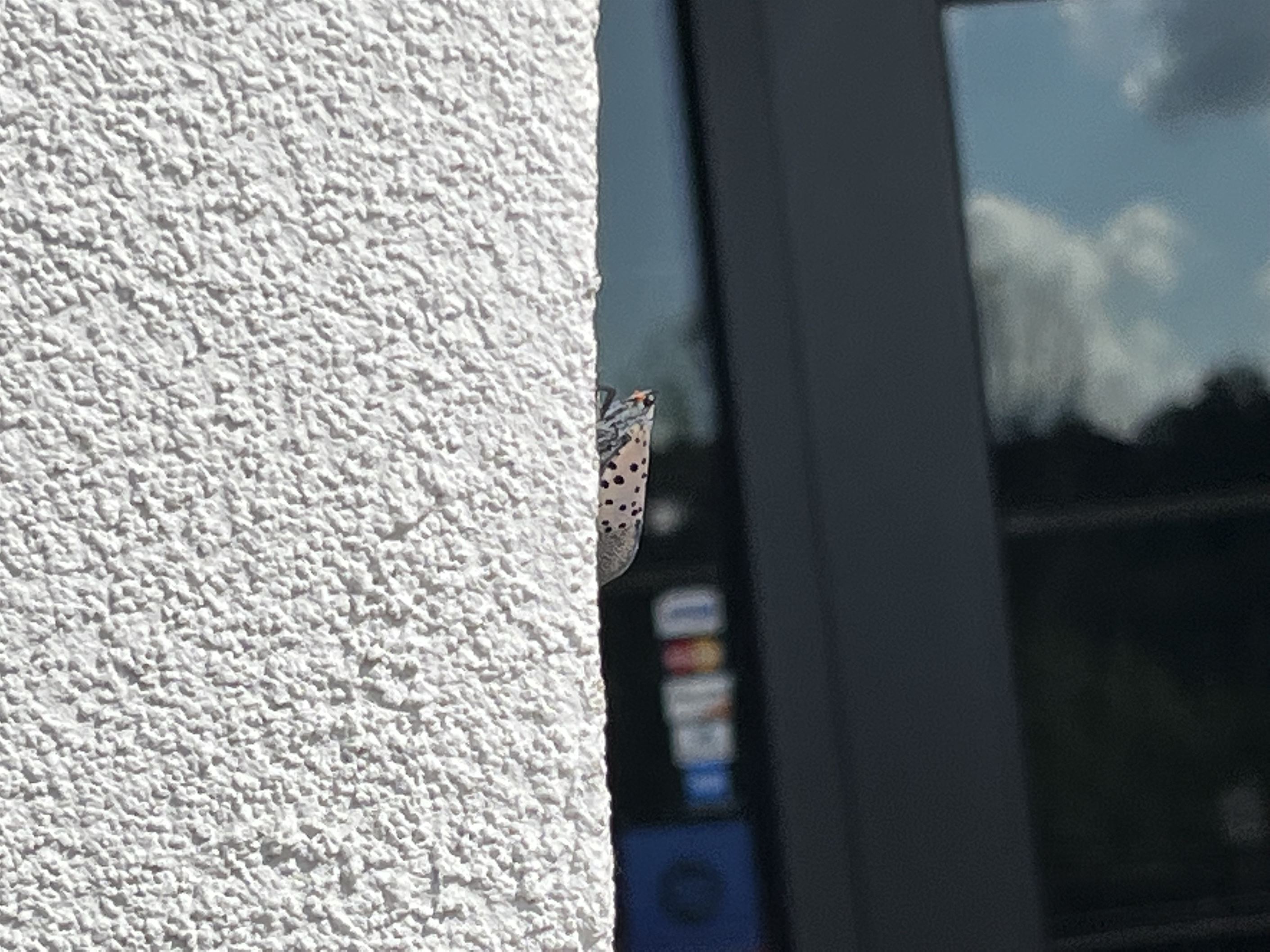During the past few weeks, the spotted lanternfly has been spreading around the Montclair State University campus, provoking an infestation.
Discovered in the United States in 2014, the spotted lanternfly has been a serious threat to the country. Originating from China, the spotted lanternfly is known to be a very invasive species.
Matthew Aardema, an assistant biology professor, shared one of the possible ways in which this species might have come to the U.S.
“Although how it came to the U.S. is not precisely known it is believed that egg masses were attached to a shipment of stone that arrived in 2012,” Aardema said.
Aardema also explained that the species is a threat to plants, specifically grapevines, fruit trees and other horticultural products.
“They directly weaken plants by feeding on their sap,” Aardema said. “They also produce a sugary secretion that promotes the growth of mold which can further harm a plant.”
The biggest concern to Montclair State’s campus, according to Aardema, is the spotted lanternfly harming the trees on campus by swarming them and leaving egg masses.
“If a large number are observed on a tree or other plant on campus, University Facilities should be notified,” Aardema said. “If an egg mass is found, it’s a simple matter to destroy it with a stick or a similar object.”
Spotted lanternfly egg masses look like a light brown/tan lichen on the sides of trees.

Montclair State University campus is facing a spotted lanternfly infestation.
Jenna Sundel | The Montclarion
Haifa Nouaime, a former adjunct professor, had a run-in with the spotted lantern fly on Montclair State’s campus while picking her son up over the summer.
“When I first saw a lanternfly a couple of years ago in [Pennsylvania] I thought it was gorgeous,” Nouaime said. “Well, that thought quickly changed especially when I went to [Montclair State’s] campus two weeks ago. I was waiting outside by the white statues for my son to finish his music summer [camp]. The campus was totally infested with these critters.”

Haifa Nouaime, a former adjunct professor, had a run in with quite a few lanternflies on Montclair State’s campus over the summer.
Photo courtesy of Haifa Nouaime
The species took quite a liking to Nouaime, as they began to land on her one by one.
“For some reason, my arm was the perfect landing pad for them,” Nouaime said. “I sat still to see how many would come to visit me. At some point, a concerned woman sitting at a table across from me came up to me to alert me that they were all over my head.”

Spotted lanternflies land on Haifa Nouaime while she waits for her son at the university.
Photo courtesy of Haifa Nouaime
Many students have seen the lanternflies around campus and are expressing concerns about the infestation.
Muhaymin Shakur, a senior computer science major, said the insects are getting out of control.
“They are very annoying, they are all over the place,” Shakur said. “I was skating on my board and then one hit me directly in the middle of my chest and then dropped on the ground and died.”

Muhaymin Shakur, a senior computer science major, finds the laternflies annoying.
Lynise Olivacce | The Montclarion
Muhammad Wright, a junior computer science major, shared his experience encountering spotted lanternflies.
“I feel like they are everywhere I [sit], like at least five or more at one time and I’m not really scared of them but they kind of startle me sometimes,” Wright said. “They just [keep] crawling on the back of my neck.”

Muhammad Wright, a junior computer science major, thinks the lanternflies around campus are annoying, and something should be done about them.
Lynise Olivacce | The Montclarion
Joseph O’Shea, an arborist and Montclair State alumni, shared his professional expertise and explained how these insects are affecting the community.
“The Ailanthus Tree, also known as the Tree of Heaven, is the tree that these insects prefer the most,” O’Shea said. “You will see them all over the state as they can thrive just about anywhere. This is one of the difficulties we are facing with this insect. They are moving from these trees into our communities and causing issues within our landscapes on various other trees.”
According to O’Shea, the community can help to deal with this issue by scraping away egg masses when seen and reaching out to professional arborists to help contain them on their property.
Spotted lanternfly egg masses look like a light brown/tan lichen on the sides of trees.



